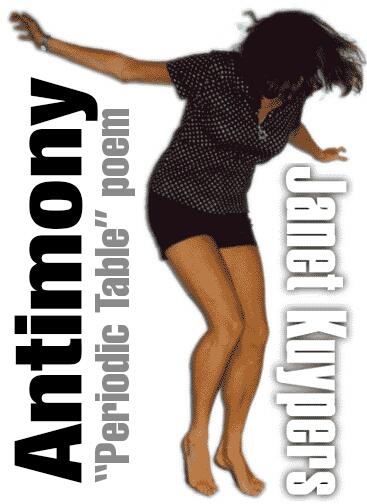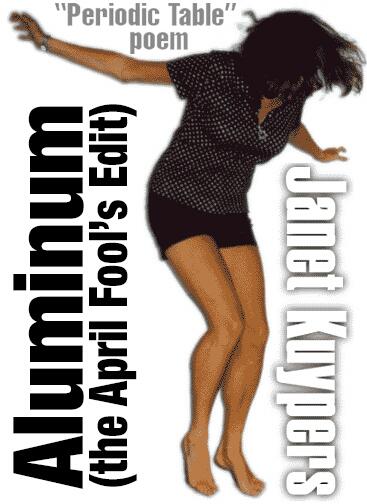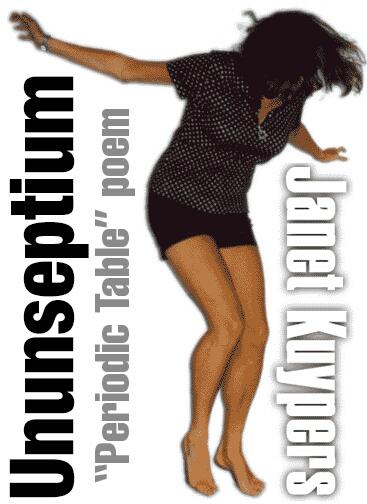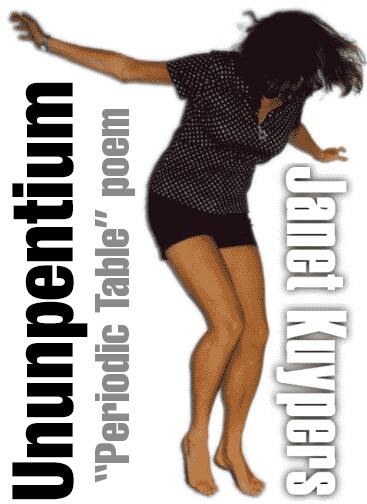Boron from the Big Bang
Janet Kuypers
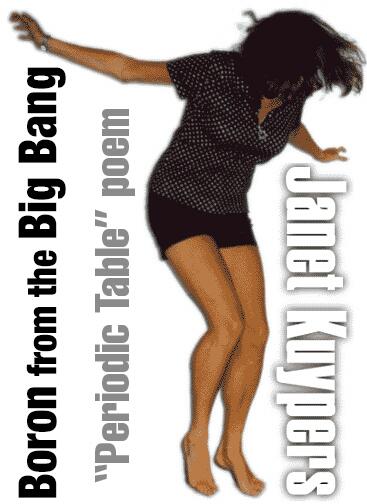
from the “Periodic Table of Poetry” series (#005, B)
3/21/13
The Higgs boson,
the Higgs particle.
The God particle,
as some have called it.
It’s an elusive
elementary particle
theorized about
for nearly half a century.
They call it the God particle
because it might have created
all matter.
You see, scientists
are trying to figure out
how the Big Bang
started to evolve.
You see, the theory
is that all of the universe’s energy
was created
from this massive explosion
from
nothingness.
But the question remains:
how did any
of that energy
turn into matter?
Because during the first
few minutes of our universe
after the Big Bang,
the temperature was so hot,
that it was too hot
for any binding energy
that could have supported
any matter, even hydrogen
or it’s isotope deuterium.
With temperatures so hot,
this bottleneck
delayed the formation of anything
until the universe
was cool enough
to make anything
out of anything.
But just a few minutes
after the Big Bang,
elements burst forth,
because the universe
suddenly got cool enough.
But at twenty minutes
after the Big Bang,
the universe was suddenly
TOO cool for nuclear fusion
or nucleosynthesis,
and THAT is when elemental
abundances were nearly fixed…
That means
hydrogen, helium
and trace anounts
of lithium, beryllium
and Boron
were the elements formed
in those first three minutes
of the Big Bang.
(Sorry, any elements
starting at carbon or higher
were only formed
after stars were around
to create them.)
…So the creation
of matter out of energy
during the formation
of this universe
only happened
in an insanely brief period
of the universe’s history.
Was it just
the insanely hot temperature
in this insanely short period
that did it?
And what does this
have to do with
the Higgs boson particle anyway?
Well, scientists believe
this Higgs particle is a part
of the Higgs field,
an invisible field of energy
throughout the entire universe.
That Higgs particle
interacts with whatever energy
passes through the Higgs field.
And with this interaction,
particles,
massless particles,
they trade their energy
to gain mass
when passing through.
And this Higgs field,
in the beginning of the universe,
helped create matter.
Which helped create us.
Higgs helped create matter,
including the first elements
in the universe,
from hydrogen
to the comparatively heavy
Boron.
Yeah,
five electrons is heavy
in the formation of the universe.
Yeah, Boron,
which helps keep our bones strong.
Boron treats osteoarthritis.
Boron builds muscles,
and when it comes to
trying to understand this science,
it even improves our thinking skills.
We’ve known of Boron
for thousands of years,
from the deserts in Tibet,
or from China in glazes
through to Persia
before it got to Italy,
where it was used
for medical purposes.
Well, knowing how long
we’ve used Borax for cleaning,
or even that Boron’s used
to make the strongest
magnet ever made,
it’s nice to know
that we also understand
how much this
infancy-of-the-universe
element
is vital in everything in our lives,
from our muscles and bones
to the very creation of the universe.
Yeah, it’s cool to see
how scientists
are starting to piece together
how matter came to be
in this universe,
because without that Higgs field,
and without that Higgs particle,
energy would never
have turned into
Boron,
to create any
thing,
or even create us.

